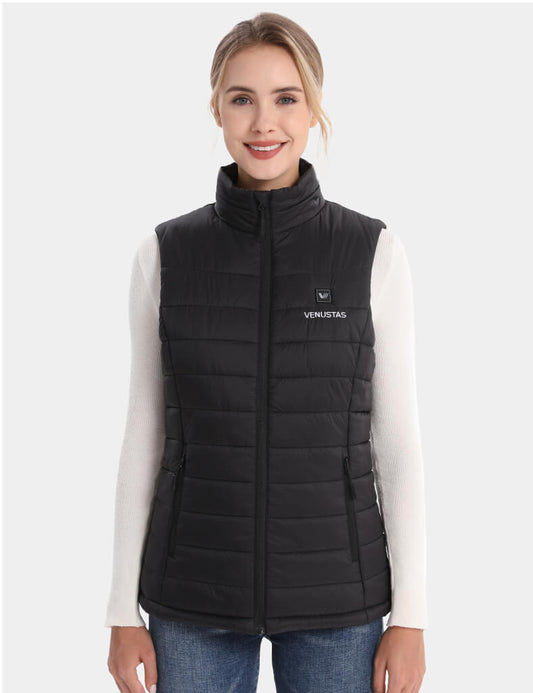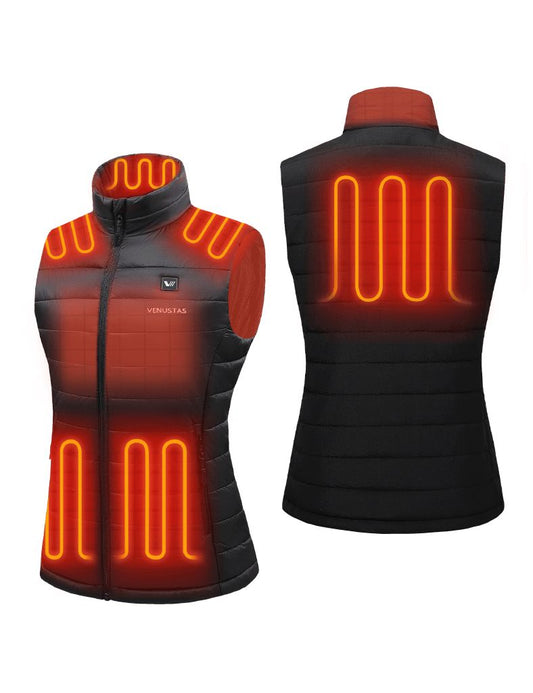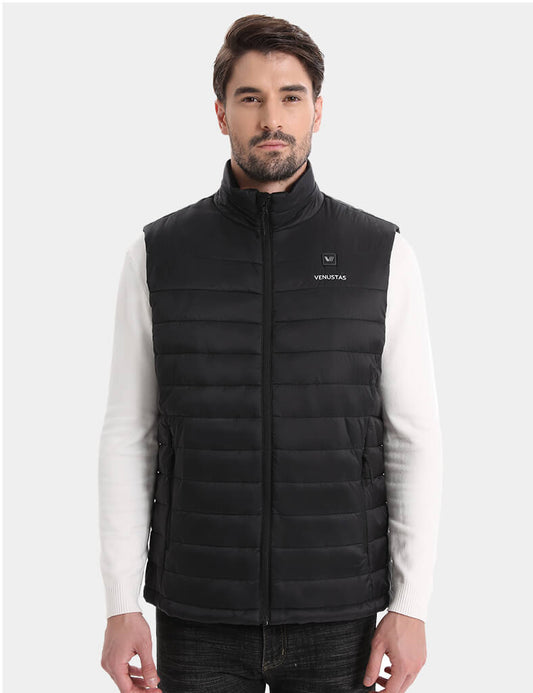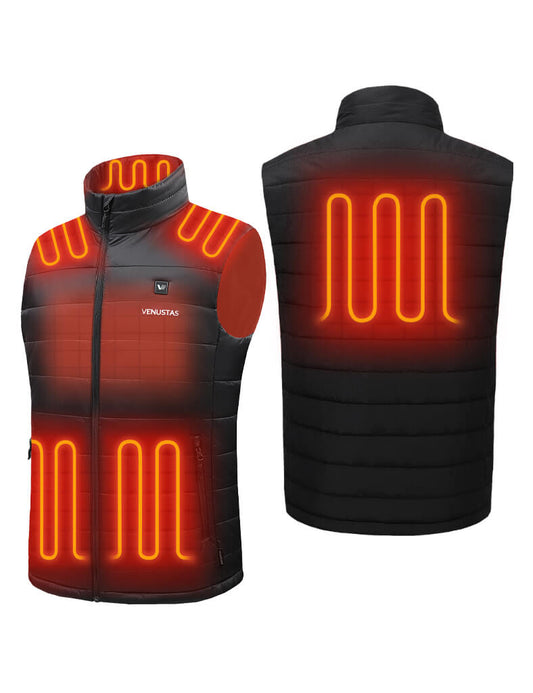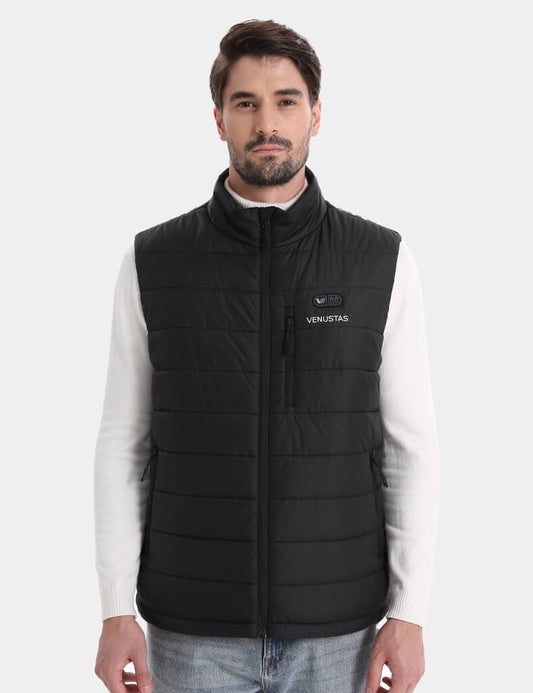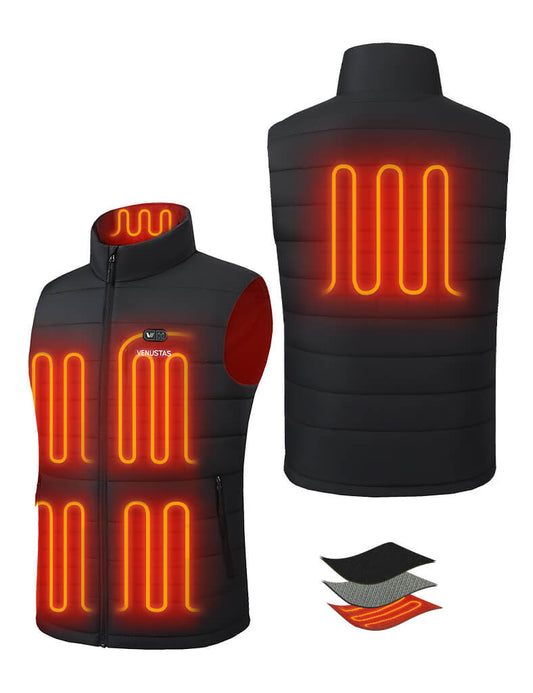Battery for Heated Vest Explained: Lifespan, Safety & Best Picks
Heated vests have become a game-changer for outdoor enthusiasts, commuters, and anyone looking to stay warm without bulky layers. At the core of these garments is the battery pack, an essential component that powers the heating elements and determines how long you can enjoy steady warmth.
Choosing the right battery isn’t just about comfort; it’s also about safety, convenience, and maximizing your vest’s performance. In this guide, we’ll break down everything you need to know about heated vest batteries, from lifespan and safety to the best picks on the market.

What Is a Battery for a Heated Vest?
A heated vest battery is a rechargeable power source, typically a lithium-ion or lithium-polymer pack, designed to supply energy to the vest’s heating elements. These batteries are compact, lightweight, and optimized for wearable use. Depending on the brand and model, they may connect via USB, proprietary ports, or removable packs that slide into a dedicated pocket.
Battery Pack for Heated Vest: What to Look For
1. Voltage Compatibility
Heated vests usually require batteries with a specific voltage rating, most commonly 5V, 7.4V, or 12V.
-
5V (USB-powered): Convenient and widely compatible with power banks, but may provide shorter heating times and lower maximum heat.
-
7.4V: A balance between comfort and power, often found in premium heated apparel.
-
12V: High-performance heating, typically used for extreme cold or motorcycle gear.
Always check your vest’s specifications before pairing it with a battery, as mismatched voltage can damage the heating elements or reduce performance.

2. Capacity (mAh / Wh) and Expected Heating Time
Battery life depends on capacity (measured in milliamp-hours or watt-hours) and the heat setting you use.
-
A 5,000mAh pack may last about 2–4 hours.
-
A 10,000mAh pack can run for 6–8 hours.
-
Larger packs (15,000mAh+) may stretch beyond 10 hours on low settings.
Keep in mind that higher heat levels drain the battery faster.
3. Safety Features
Quality heated vest batteries should include built-in safety protections such as:
-
Short-circuit protection to prevent electrical hazards.
-
Overheat prevention to ensure the vest doesn’t become dangerously hot.
-
Overcharge and over-discharge protection to extend the battery’s lifespan.
4. Portability and Weight
Since the battery is worn inside the vest pocket, weight and size matter. A high-capacity battery may offer longer heating time but could feel bulky. Look for a balance between run time and comfort depending on your activity (hiking, skiing, commuting, etc.).

Best Battery for Heated Vest
Here’s a detailed guide to help you decide:
-
Everyday Wear: If you plan to wear your heated vest for daily commuting or office use, a 7.4V 10,000mAh lithium-ion battery is an excellent choice. It provides reliable warmth throughout a full workday without needing frequent recharges. Its moderate capacity balances performance and portability, making it comfortable to carry in your vest pocket without adding bulk.
-
Outdoor Sports and Extreme Cold: For activities in freezing temperatures—such as skiing, hiking, or snowmobiling—a 12V high-capacity battery delivers maximum heating performance. These batteries provide stronger warmth and longer runtime, ensuring that your vest keeps you comfortable even in the harshest winter conditions. Although slightly heavier, the extra power is worth it for extended outdoor adventures.
-
Flexibility and Convenience: If you’re looking for a versatile option, a universal USB power bank can work well with 5V heated vests. These batteries not only power your vest but also allow you to recharge other devices like smartphones or portable lights, making them ideal for travel or multitasking outdoors.
Tips for Choosing a Battery

-
Brand Compatibility: Always opt for brand-approved batteries whenever possible. This ensures proper compatibility, optimal performance, and warranty coverage.
-
Consider Your Activities: Match the battery capacity and voltage to how you plan to use your vest. Short trips or indoor use may not require high-capacity batteries, whereas long outdoor excursions benefit from higher power options.
-
Portability vs. Power: Higher-capacity batteries often weigh more. Choose one that balances runtime with comfort and portability, depending on your daily needs.
Tips for Extending Battery Life
Getting the most out of your heated jacket or vest starts with proper battery care. Here are some practical tips to help extend the lifespan of your battery and ensure it performs reliably when you need it:
1. Charge Regularly
Avoid waiting until the battery is completely drained before recharging. Lithium-ion batteries, which are commonly used in heated jackets, perform best when they are charged regularly. Keeping the battery topped up helps maintain its overall health and ensures it’s ready to deliver consistent warmth whenever you need it.

2. Store at 40–60% Charge for Long-Term Storage
If you won’t be using your heated apparel for an extended period, store the battery at around 40–60% charge. Fully discharging or storing it fully charged can reduce its long-term capacity, so this range is ideal for preserving battery life during off-seasons.
3. Keep Batteries Warm
Cold temperatures can cause batteries to drain faster than usual. When not in use, keep the battery close to your body or in a warm, dry place to maintain its charge. This is especially important during outdoor activities in freezing weather.
4. Use Appropriate Heat Settings
While it’s tempting to keep your jacket on the highest heat setting, using lower heat levels whenever possible can help conserve energy. By adjusting the temperature to match your needs, you can extend the battery life per charge and reduce overall wear on the battery.
Safety and Care of Heated Vest Batteries

-
Always use the recommended charger. Using third-party adapters with incorrect voltage may damage the battery.
-
Inspect regularly. Stop using the battery if you notice swelling, leaking, or unusual heat.
-
Avoid water exposure. Most heated vest batteries are water-resistant but not waterproof.
-
Travel smart. Airlines usually require lithium batteries to be carried in hand luggage, not checked baggage.
Conclusion
The battery is the heart of your heated vest, dictating not only how warm you’ll feel but also how safe and convenient the experience will be. By understanding voltage, capacity, safety features, and care tips, you can make an informed choice that extends the life of your vest and maximizes comfort.
